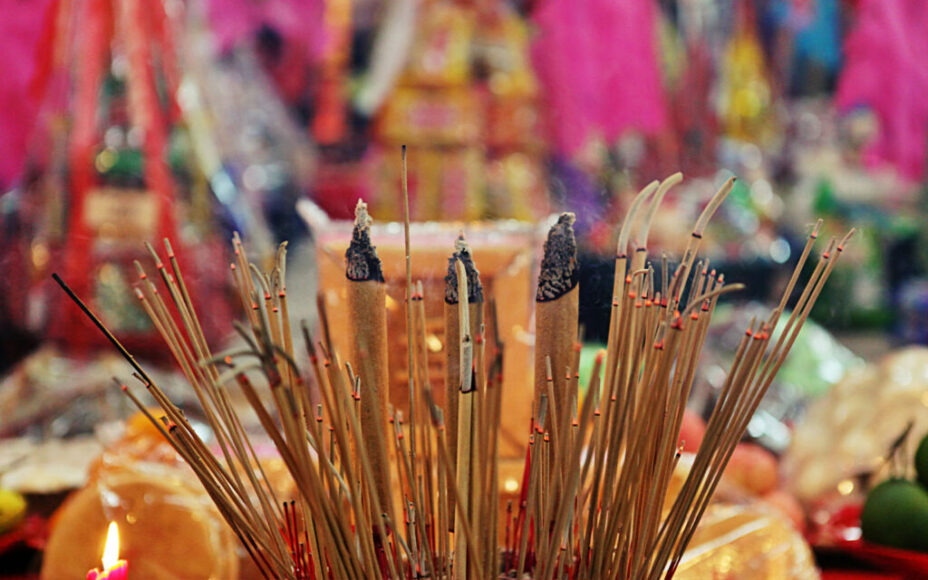The confluence of cultures that’s shaped Macao over centuries gives rise to a remarkable calendar of cultural events. Many trace their roots to ancient Chinese customs; others reflect Macao’s Portuguese Catholic legacy. Then there are those found nowhere else, festivals that are entirely unique to Macao. Sombre or joyful, all are laden with symbolism, steeped in ritual and unite communities within the city.
Among Macao’s many annual festivals, four that took place between 4 April and 5 May stand out for how clearly they reflect the city’s layered identity. Together, Cheng Ming, Easter, the A-Ma Festival and the Festival of the Drunken Dragon help showcase Macao’s status as a place where ‘Chinese culture is the mainstream and diverse cultures coexist’.
Cheng Ming: Reconnecting with our ancestors
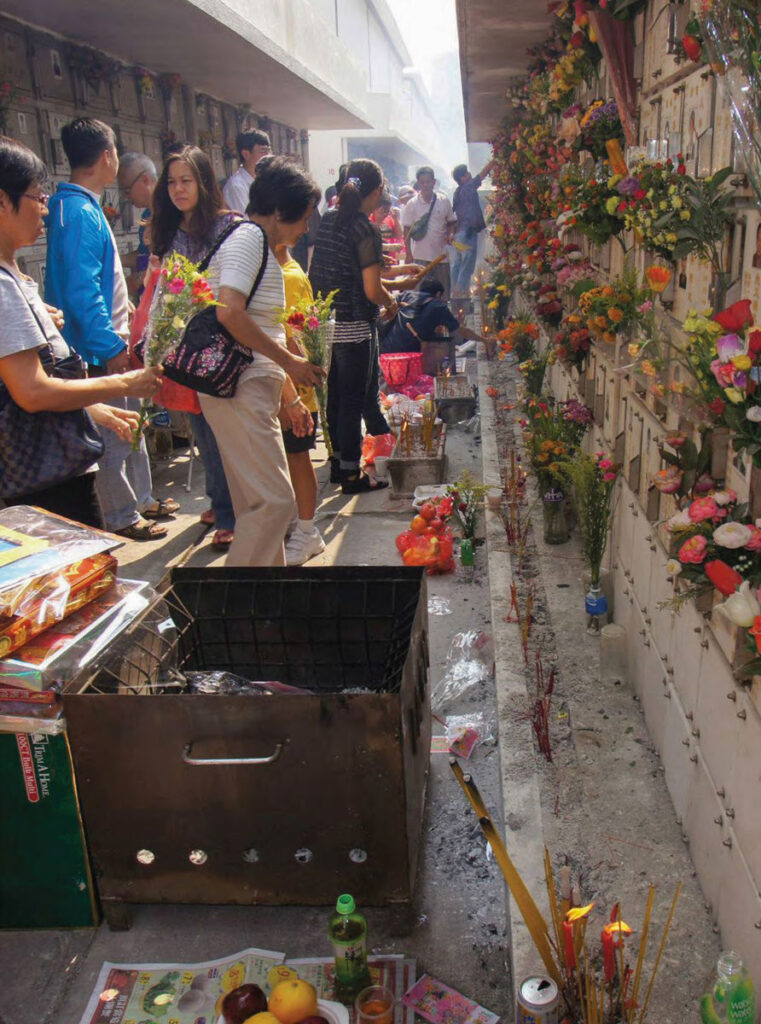
Once a year, between the end of spring and the start of summer, families carrying incense, food and paper offerings make their way to Macao’s cemeteries. This day is Cheng Ming, also known as the Tomb-Sweeping Festival and the Day of the Departed. It’s a time when people pause to demonstrate filial piety by honouring their ancestors and reconnecting with their pasts in a practice dating back millennia in China. Cheng Ming always falls on the 106th day after the Winter Solstice. This year it was 4 April.
Cheng Ming is one of China’s 24 Solar Terms, which began in the Western Han dynasty. They are based on the movements of the Big Dipper and part of the Chinese ‘Xia Calendar’. In 2016, the Solar Terms were inscribed on UNESCO’s Representative List of the Intangible Cultural Heritage of Humanity. Cheng Ming, meanwhile, is listed as a part of Macao’s own intangible cultural heritage. According to Ieong Hoi Keng, president of the Macau Documentation and Information Society, its name refers to a period when “all things are clear and bright.”
Traditionally, Cheng Ming involves cleaning and weeding the graves of relatives. Offerings – including the occasional model car – are supposed to be items useful the afterlife. Food is a big thing, from roast chickens to fruits, and many families end up feasting in the cemetery with their late loved ones. Willow branches are another popular offering. Their new leaves unfurl early, a symbol of vitality and the idea that memories of ancestors will always be in our hearts.
Ieong notes that while the spirit of Cheng Ming remains strong in Macao, modern life can change how it plays out. Limited space in the city means cremation is increasingly common, with people’s ashes being kept in columbaria (walls of compartments that hold urns). And, with fewer extended families living together, younger generations aren’t learning the full range of Cheng Ming rituals. These days, many people opt for more low-key forms of remembrance like laying flowers or lighting incense. While Ieong would love Cheng Ming to maintain its traditional, elaborate format, she accepts the evolution.
“I believe that as long as there is respect for ancestors, it is still a form of heritage,” she says.
Easter: The most important holiday in the Christian calendar
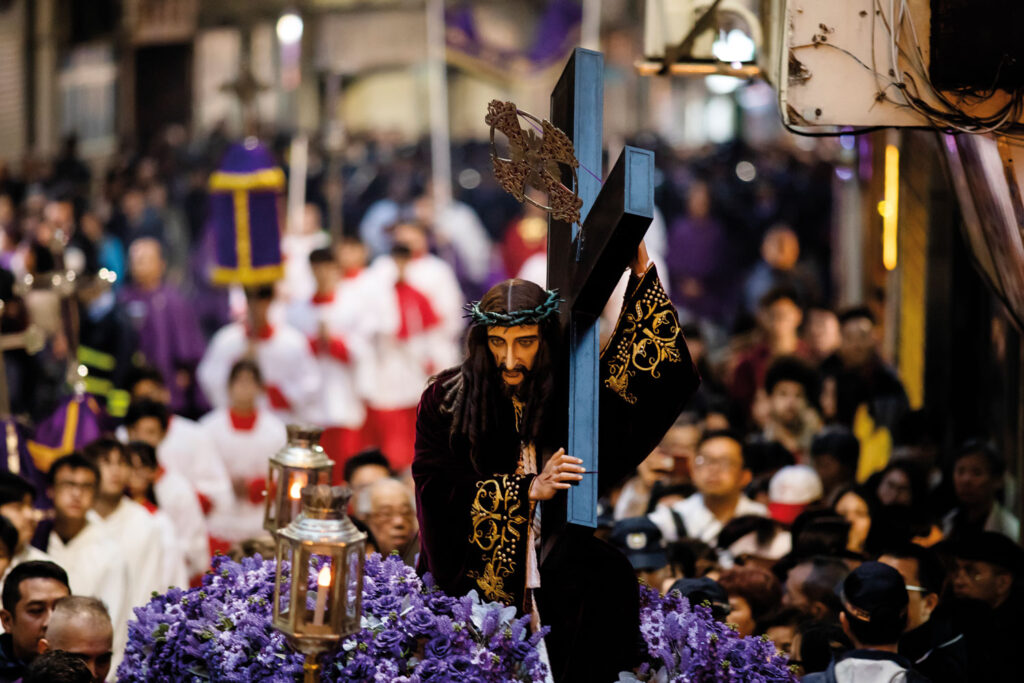
The Easter period is also about remembrance. In its case, of Jesus Christ’s suffering, death and resurrection. With 450 years of Catholic history and many beautifully preserved churches, Macao is a meaningful place to celebrate Easter. While the Special Administrative Region designates two days of Easter as public holidays – Good Friday and Easter Saturday (this year they fell on 18 and 19 April) – the city’s devout follow four days of religious observance. Director of the Diocesan Catholic Education Commission Chan Teng Fong says that every Catholic church in the city holds Masses from Holy Thursday to Easter Sunday. Thursday’s marks the Last Supper, when the Bible says Jesus dined with his disciples for the final time. In this ceremony, a priest selects 12 parishioners and washes their feet, according to Chan. The act symbolises humility and service to others, he explains.
Good Friday marks the day of crucifixion and its name reflects the belief that Jesus died for humanity’s sins. In Macao, Jesus’ sacrifice is commemorated with the Procession of the Dead Lord. Starting at the Macau Cathedral, members of the church carry statues of the cross, Jesus’ body and his mother, Mary, on a short circuit through the old city. It’s a very solemn ritual and many Catholics fast on this day. According to Chan, traditional fasting rules mean eating only one full meal, avoiding red meat, and keeping any other food to small snacks. Some, like Chan himself, choose to eat only vegetarian food for the entire day as a sign of reverence.
Holy Saturday is a time of waiting and reflection, with sombre Easter Vigils taking place within the city’s churches that evening. Then comes Easter Sunday, the main event: a celebration of Jesus’ return to life and entrance into heaven. Macao’s Catholics flock back to church for a far more festive Mass, where priests wear white and gold vestments.
As for popular Easter symbols like eggs and rabbits, Chan notes that while these don’t originate from Catholic rituals, they have become widely associated with the festival, much like Santa Claus with Christmas. According to Chan, the Church accepts them as part of a broader cultural landscape surrounding the holiday.
A-Ma Festival: Honouring the Goddess of Seafarers
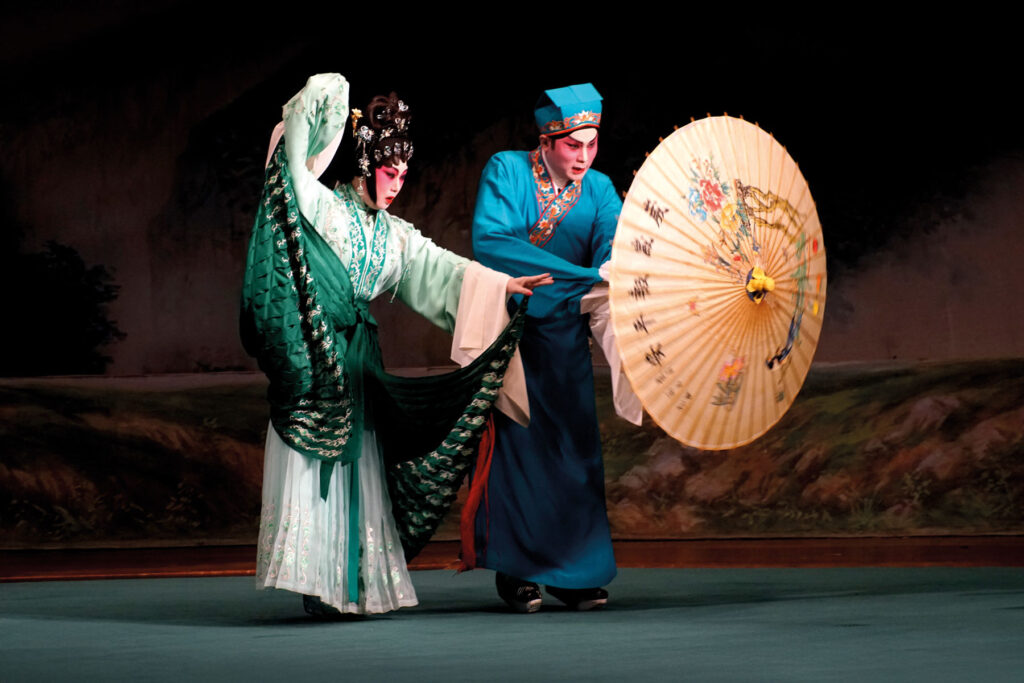
This year’s A-Ma Festival, which always falls on the 23rd day of the 3rd lunar month, coincided with Easter Sunday – evidence of just how crowded Macao’s festive calendar can get. It’s an entirely local celebration that evolved from indigenous fishermen’s reverence for the goddess A-Ma (also known as Tin Hau). As legend has it, A-Ma would protect fishermen at sea during storms. To thank her, they built temples in her honour – including one that dates back to the late 1400s, located halfway up Macao Peninsula’s Barra Hill.
This is the site of the A-Ma festival: five days of banquets, lion dances and ‘Cantonese Opera to Appease the Gods’, organised by the Chinese Opera Association of Terrestrial and Maritime Dwellers of Barra. The entity is in charge of preserving A-Ma beliefs and customs in Macao, which have been inscribed as part of China’s National Intangible Heritage.

Its president, Chan Kin Chun, has been intimately involved in annual A-Ma activities for almost 40 years. But the 77-year-old likes to point out that Macao people have been “following our ancestors’ ways to celebrate the A-Ma Festival for centuries.”
This year saw 85 tables laid for an annual banquet feeding more than 1,000 people. To accommodate the Cantonese opera performances – a key part of the celebrations since 1863 – in Barra Square, a massive theatre was built out of bamboo over the course of a month. Positioned to face a statue of A-Ma, Chan quips that the goddess enjoyed an excellent view of the shows. Nine different Cantonese operas are staged during the festival, with theatre troupes invited from the Chinese mainland and Hong Kong. Chan says that each show “brings joy for both the goddess and the people.”
Festival of the Drunken Dragon: Merrymaking with a mystical twist
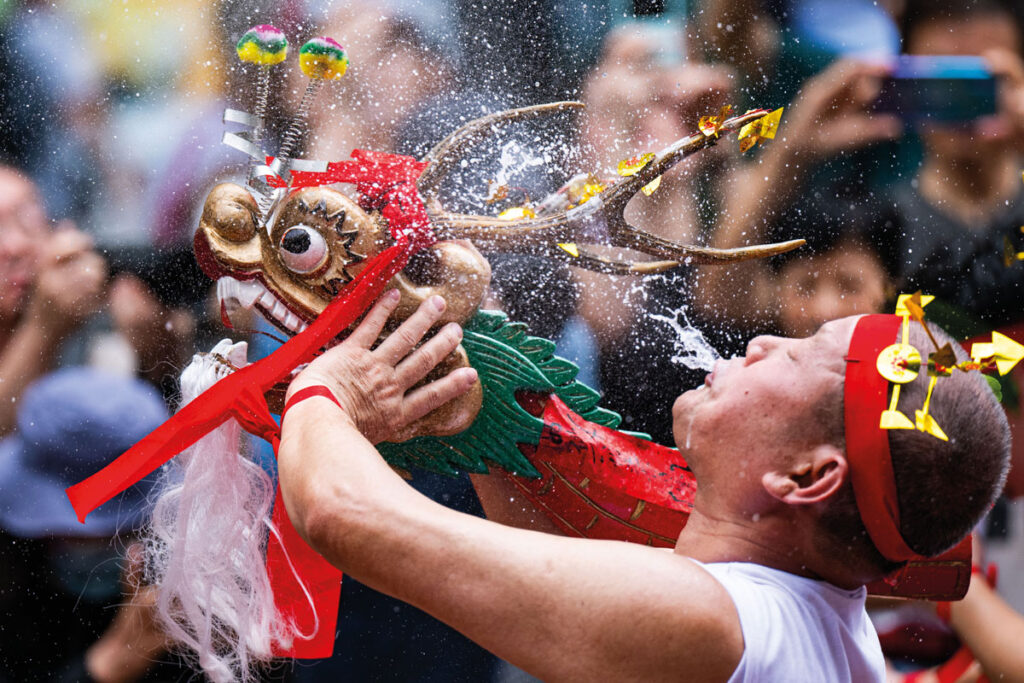
Another local celebration with roots in fishing culture is the Festival of the Drunken Dragon, dating back to at least the Ming dynasty. It’s held on the 8th day of the 4th lunar month, which this year was 5 May. The festival’s true origin has been lost to the mists of time, but one story holds that it began during a plague in Xiangshan District (today’s Zhongshan, Zhuhai and Macao).
As that legend has it, a monk cut an enormous snake into three pieces and threw them in a nearby river. Instead of sinking into the water, however, the snake’s remains are said to have flown into the sky – while afflicted fishermen who drank from the river are said to have recovered their health. Believing a celestial dragon (or loong in Chinese) had intervened to stop the plague, local fishermen thanked it by throwing what’s become a boisterous annual party – one that appears to have embraced spirited inebriation from the get-go.
Regardless of how exactly it began, the ‘Drunken Dragon’ is deeply beloved in Macao. Each year, the Macao Fishmongers Association organises the three-part festival in its honour, kicking off with a Poon Choi Feast on the 7th day of the 4th lunar month. This type of meal is traditional in parts of southern China: it refers to layers of high-quality meats, seafood and vegetables served communally in one massive bowl.
A blessing ceremony followed by the Drunken Dragon Parade takes place the next day. The rather raucous procession consists of dancing men who spray rice wine from their mouths while brandishing loong effigies carved out of wood. This year there were two parades, passing through Macao Peninula’s Tamagnini Barbosa Market, Red Market, Bairro Iao Hon Market, Barra Square and Rua da Felicidade.
Markets are the procession’s focal points, because they are where the slinky loongs engage in “plucking the greens,” says Macao Fishmongers Association Chairman Celso Sou. This ritual act that symbolises the gathering of blessings: the loong appears to eat lettuce and auspicious offerings before theatrically spitting them out to spread good fortune.
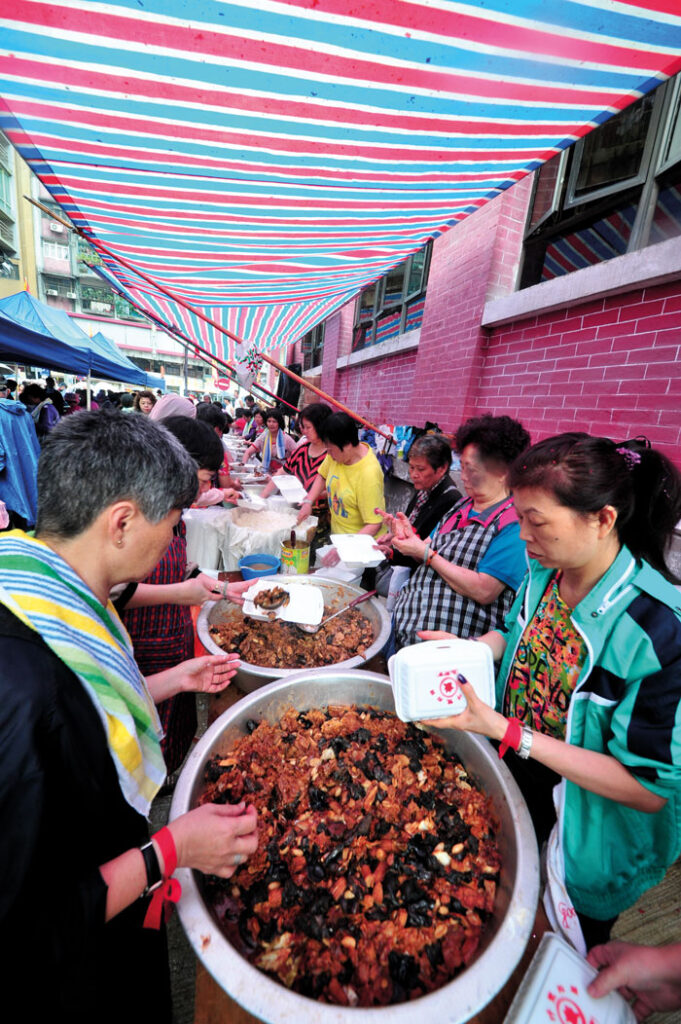
The third part of the festival also takes place at markets during the parade. It’s when ‘longevity rice’ laden with roasted vegetables and meats gets doled out to the public to represent prosperity, abundant wealth and general good fortune. To 38-year-old Sou, who has participated in the festival since childhood alongside his father and grandfather, this is its biggest highlight. He says that while Drunken Dragon Parades are also held in neighbouring areas like Zhuhai, the longevity rice tradition is unique to Macao.
“The Drunken Dragon Festival symbolises the unity and love among the people of Macao, and sharing the rice spreads this blessing and love,” he notes.
